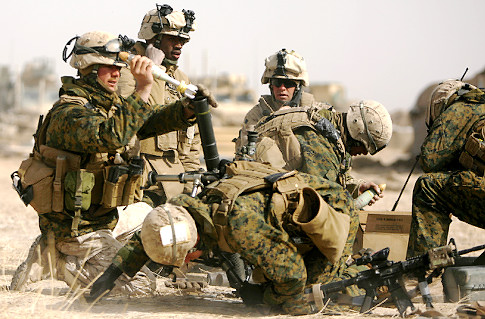Rules of Engagement too Prohibitive to Achieve Sustained Tactical Success
BY Herschel SmithGeorge Will reports at The Washington Post:
… occasionally there are riveting communications, such as a recent e-mail from a noncommissioned officer (NCO) serving in Afghanistan. He explains why the rules of engagement for U.S. troops are “too prohibitive for coalition forces to achieve sustained tactical successes.”
Receiving mortar fire during an overnight mission, his unit called for a 155mm howitzer illumination round to be fired to reveal the enemy’s location. The request was rejected “on the grounds that it may cause collateral damage.” The NCO says that the only thing that comes down from an illumination round is a canister, and the likelihood of it hitting someone or something was akin to that of being struck by lightning.
Returning from a mission, his unit took casualties from an improvised explosive device that the unit knew had been placed no more than an hour earlier. “There were villagers laughing at the U.S. casualties” and “two suspicious individuals were seen fleeing the scene and entering a home.” U.S. forces “are no longer allowed to search homes without Afghan National Security Forces personnel present.” But when his unit asked Afghan police to search the house, the police refused on the grounds that the people in the house “are good people.”
On another mission, some Afghan adults ran off with their children immediately before the NCO’s unit came under heavy small-arms fire and rocket-propelled grenades (RPGs), and the unit asked for artillery fire on the enemy position. The response was a question: Where is the nearest civilian structure? “Judging distances,” the NCO writes dryly, “can be difficult when bullets and RPGs are flying over your head.” When the artillery support was denied because of fear of collateral damage, the unit asked for a “smoke mission” — like an illumination round; only the canister falls to earth — “to conceal our movement as we planned to flank and destroy the enemy.” This request was granted — but because of fear of collateral damage, the round was deliberately fired one kilometer off the requested site, making “the smoke mission useless and leaving us to fend for ourselves.”
Analysis & Commentary
This letter seems to have been written in the spirit of The NCOs Speak on Rules of Engagement. Legendary Marine Chesty Puller recognized that the NCO corps was the backbone of the U.S. Armed Forces, and would sometimes bypass his officers and go directly to his NCOs. There is nothing better than getting feedback directly from NCOs. The observations are more direct, the learning is more instinctive and developed by real life situations, and the politics is less important than the people. This is an important contribution to our understanding of the tactical impediments to the campaign in Afghanistan.
But note that The NCOS Speak concerned Iraq where the rules were in my estimation too restrictive but still more robust than in Afghanistan. In spite of the bad examples from Iraq, Marines performed recon by fire, tanks fired point blank into buildings occupied by insurgents, and in Ramadi spotters were dealt with just like insurgents. They were engaged as if they were bringing a weapon to bear – because in fact they were.
This report from Afghanistan is dreary and depressing for its reiteration of all of the problems we have rehearsed here, including the unreliability of the ANA. But the contribution is serious and unmistakable. We cannot achieve sustained tactical success with the current rules of engagement. They simply aren’t rules suited to win a counterinsurgency campaign. But the report is more stark for the sad and anecdotal report of the state of the population. The villagers are laughing at U.S. troops. So much for winning their hearts and minds by avoiding collateral damage. When the population is laughing at your weakness, the campaign won’t last much longer. It will soon be over, one way or the other.




